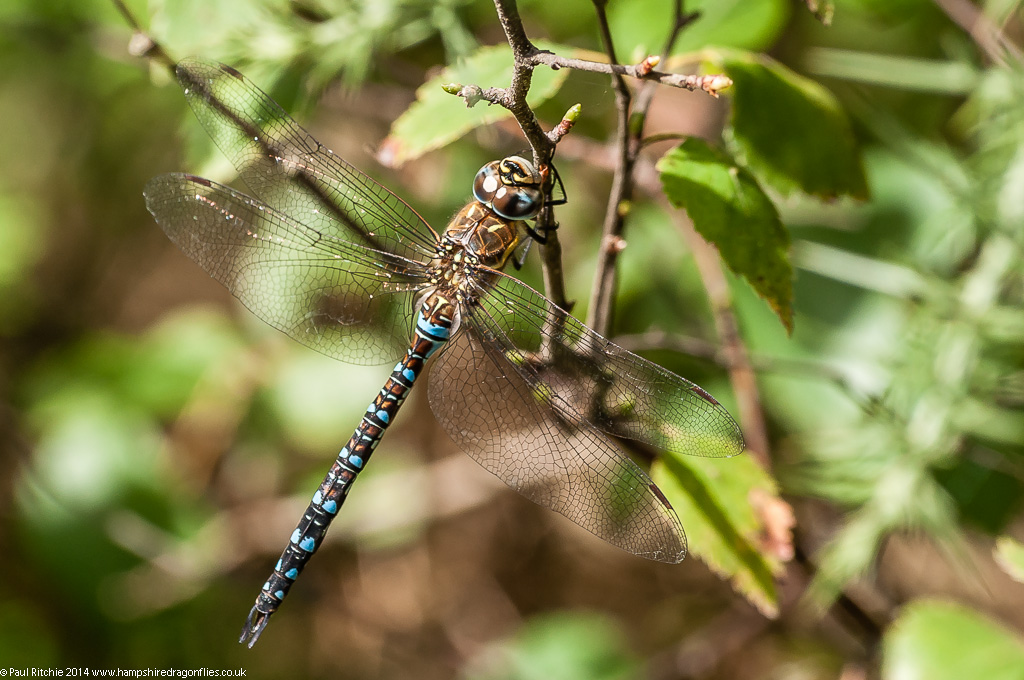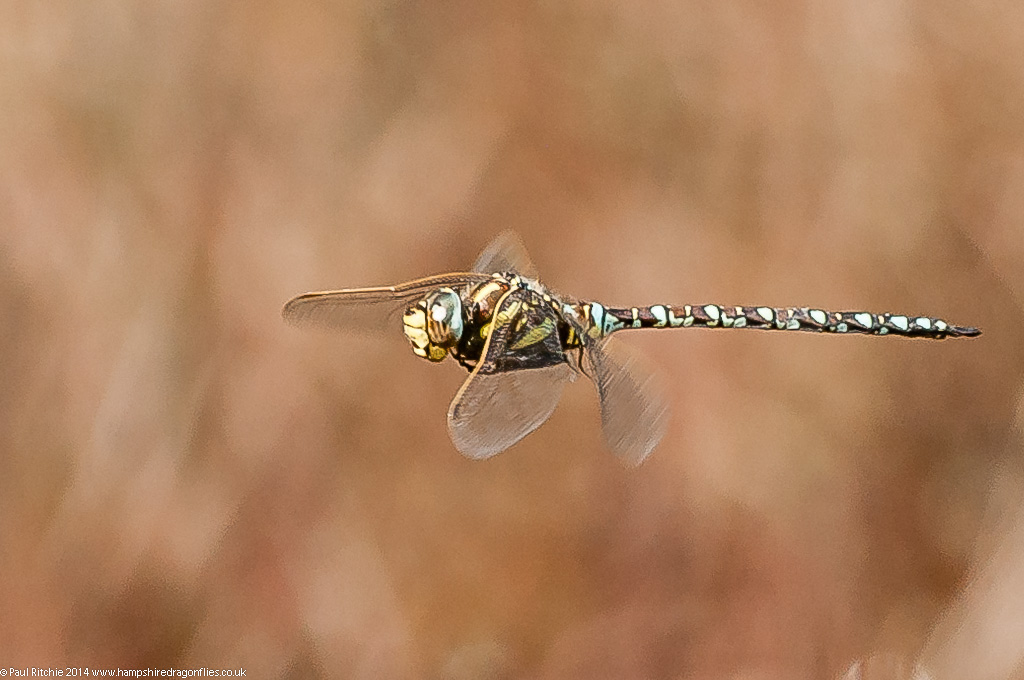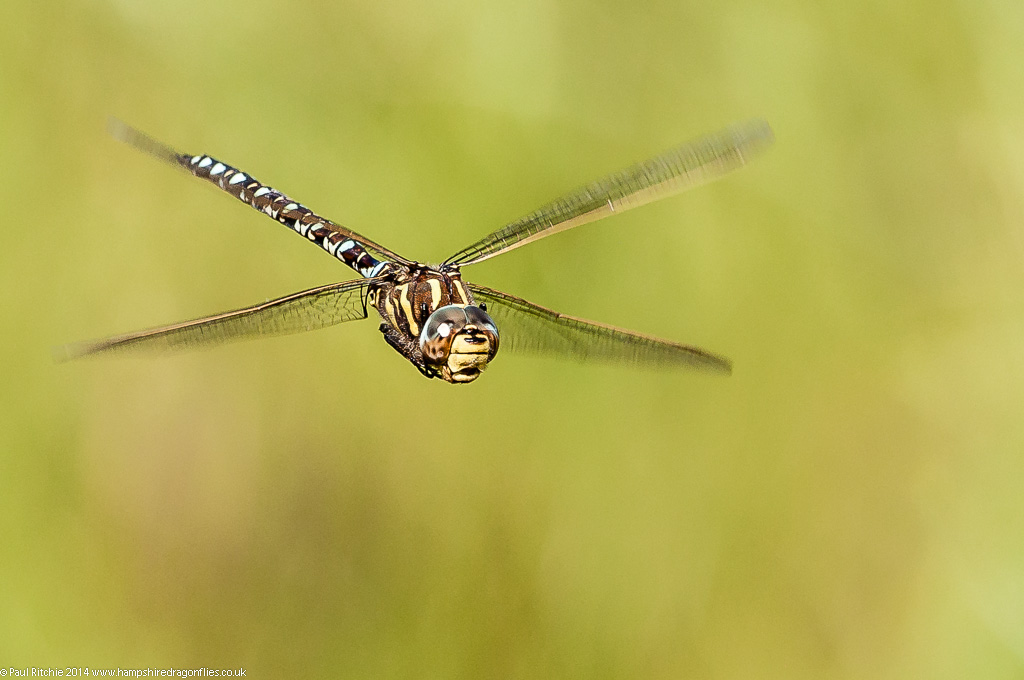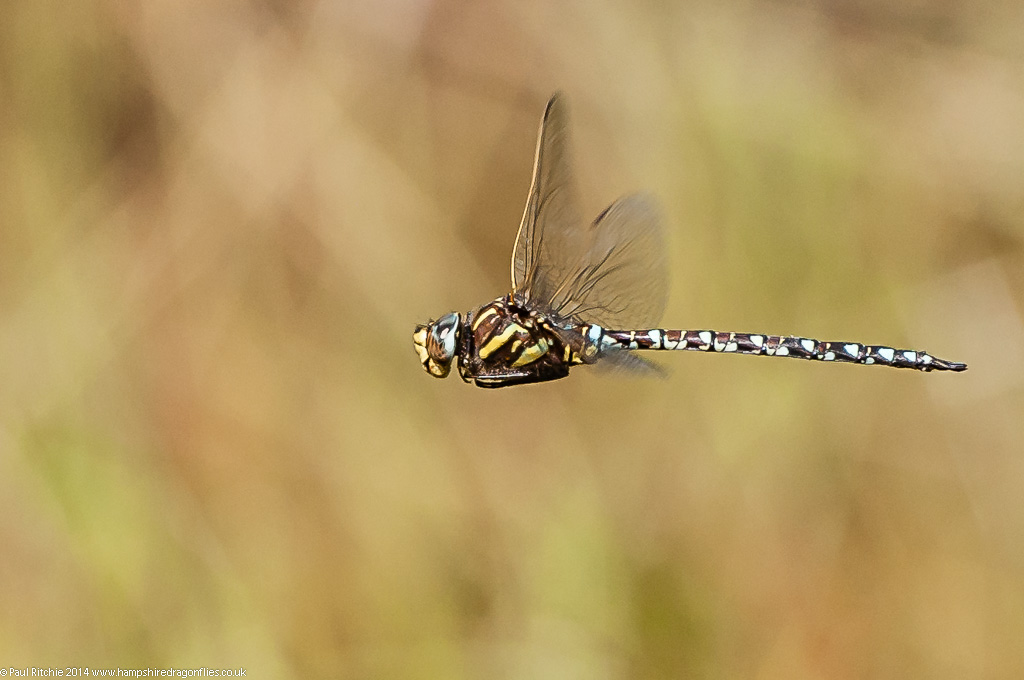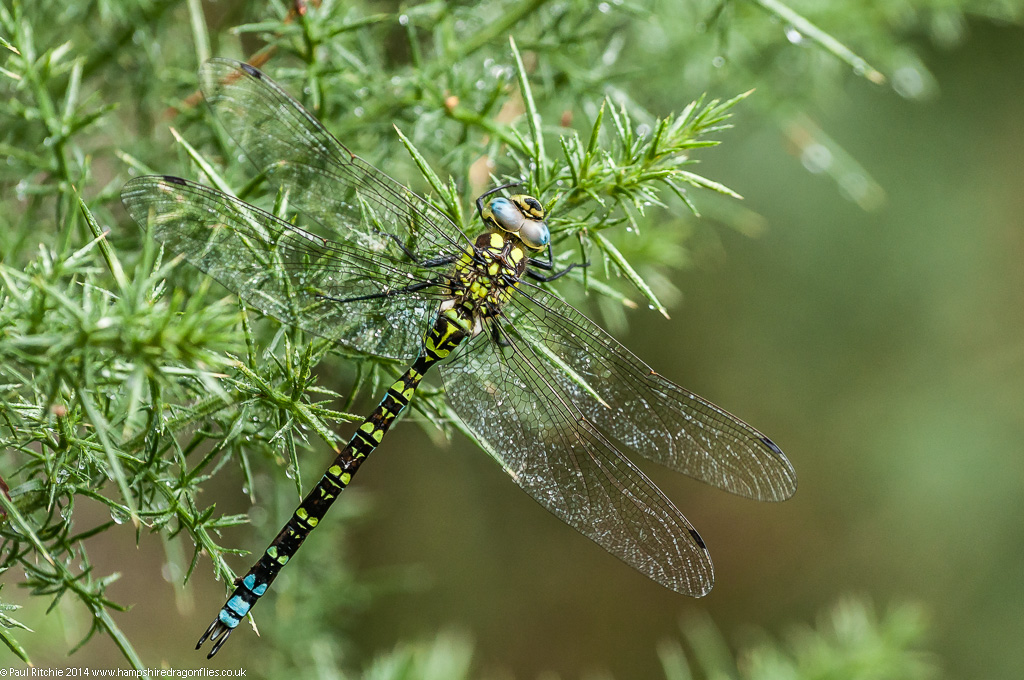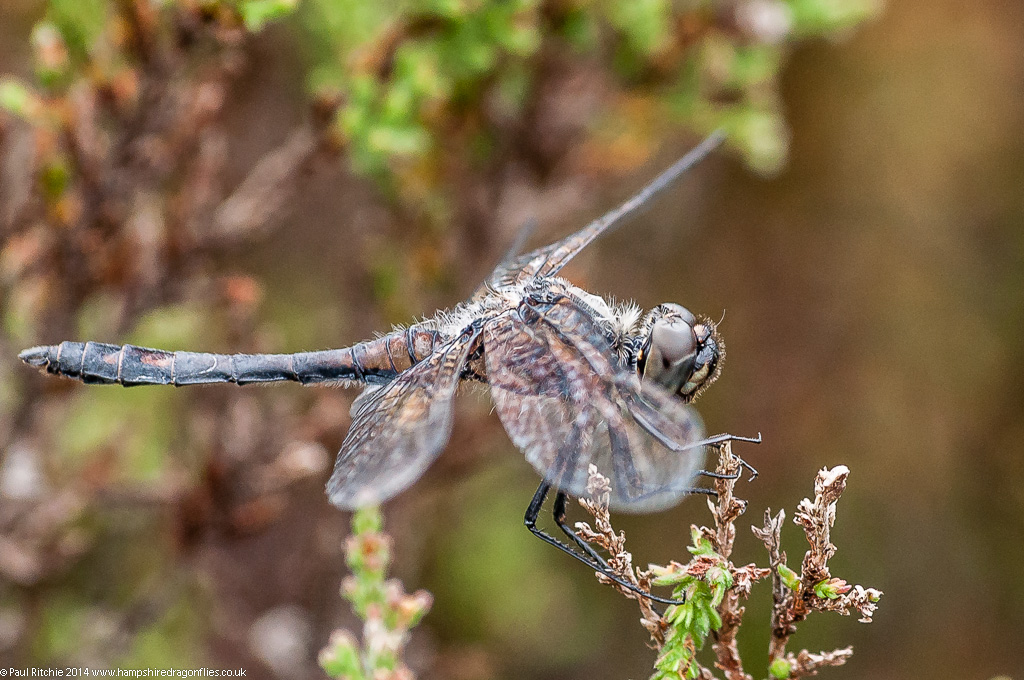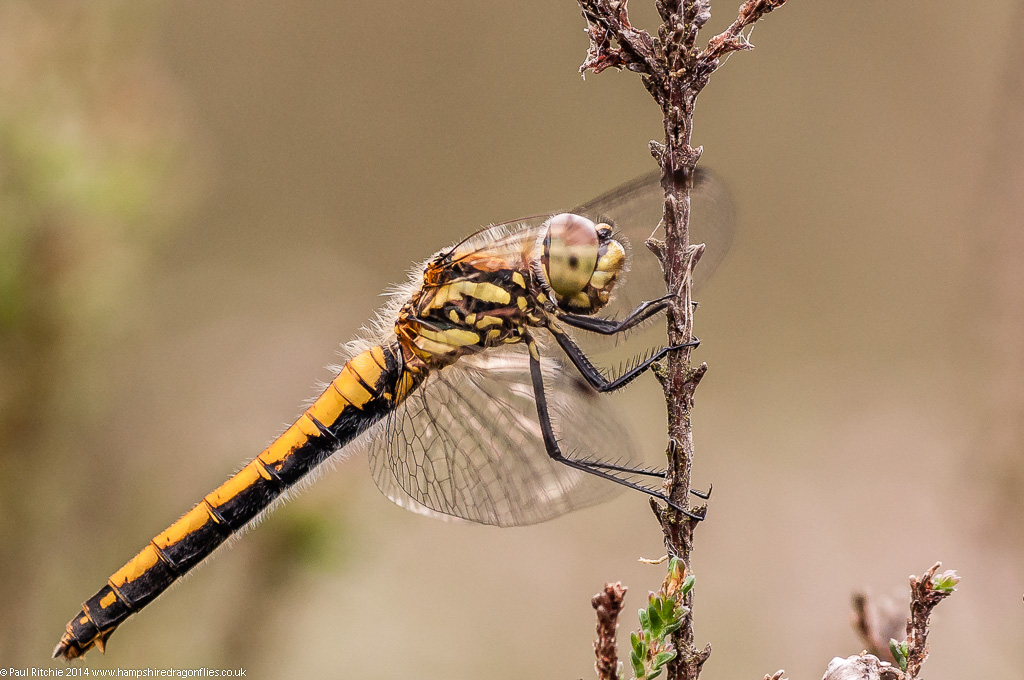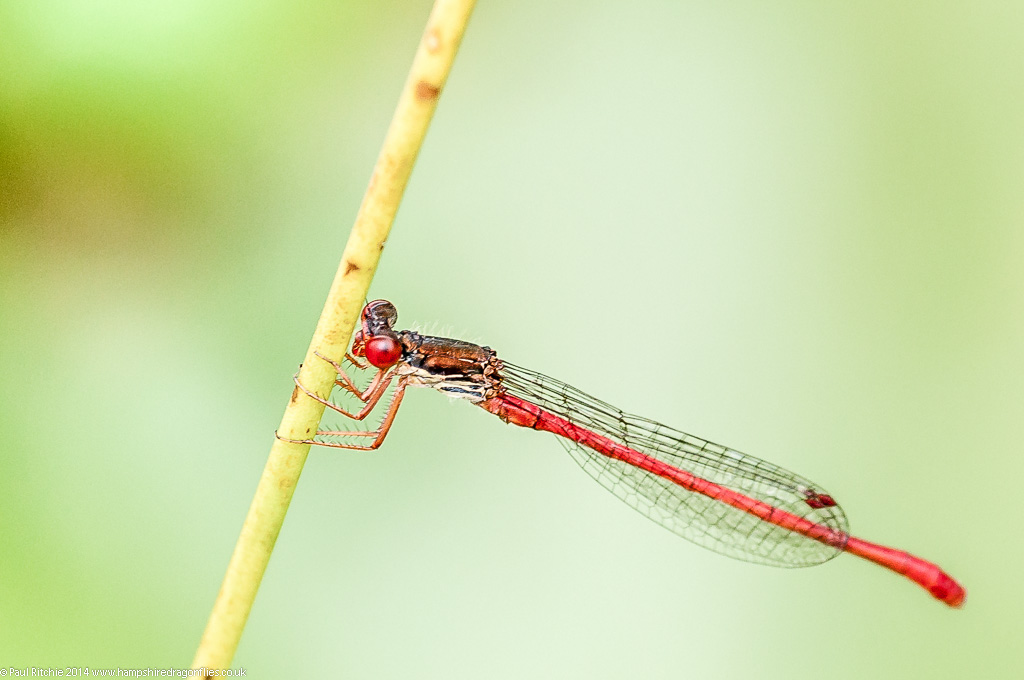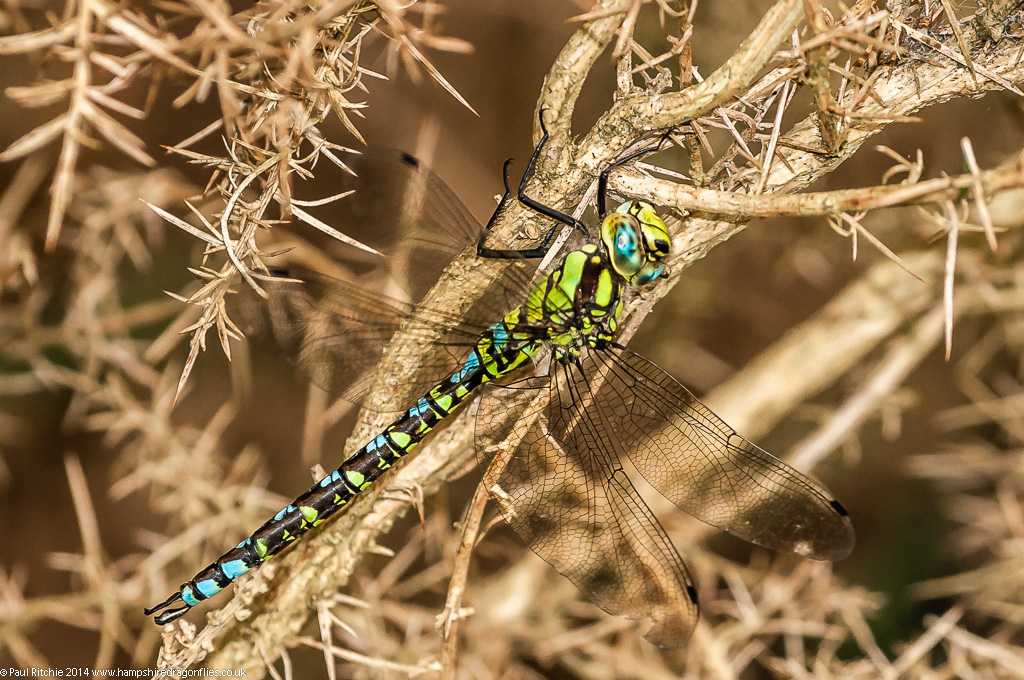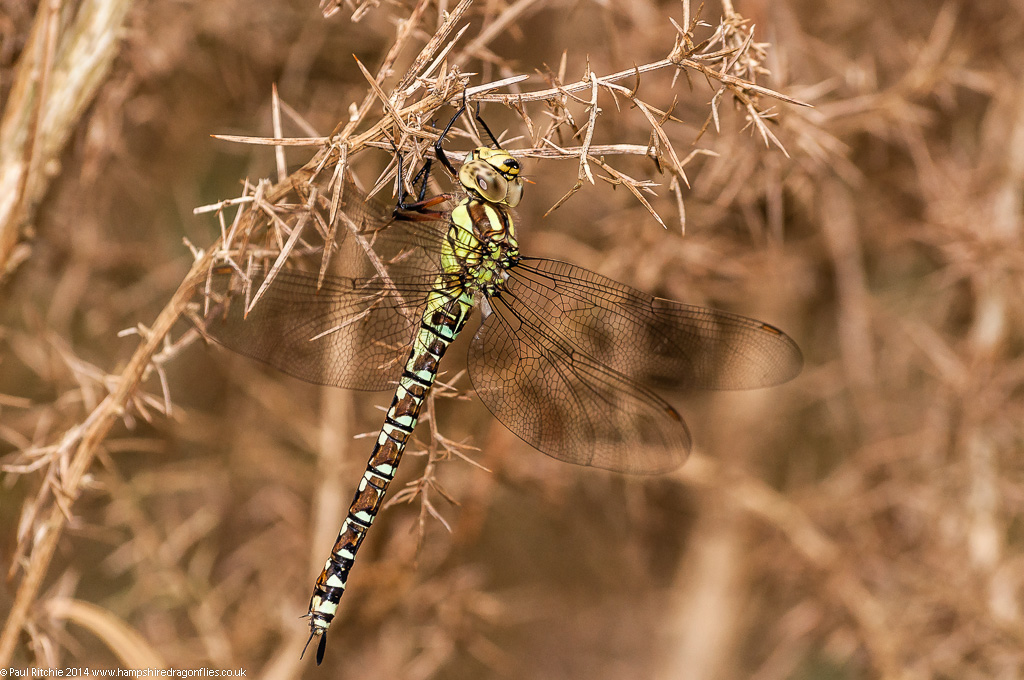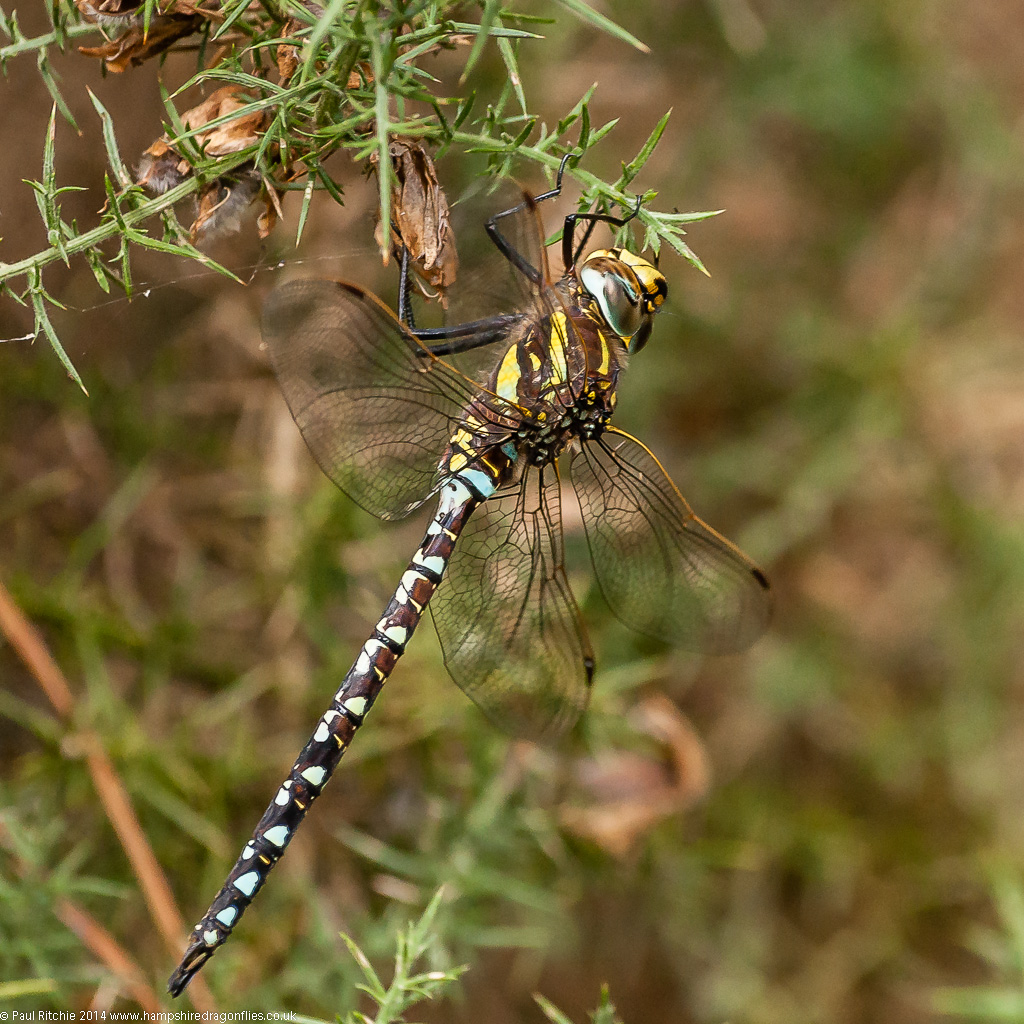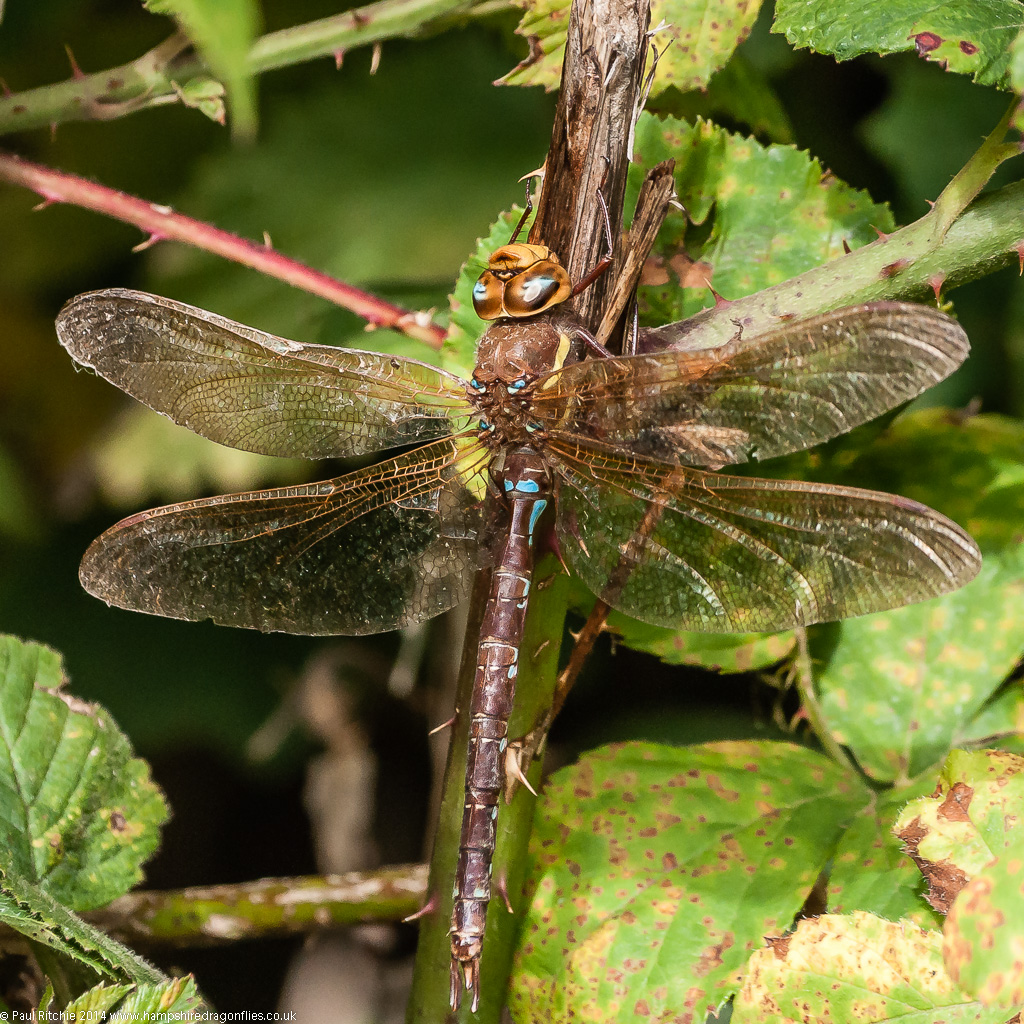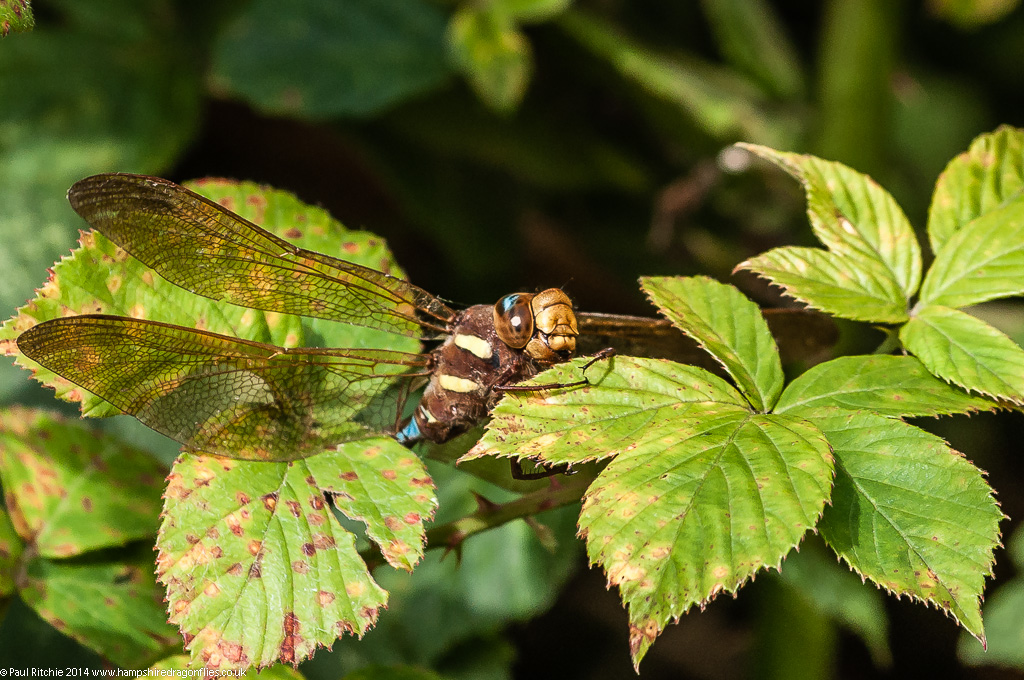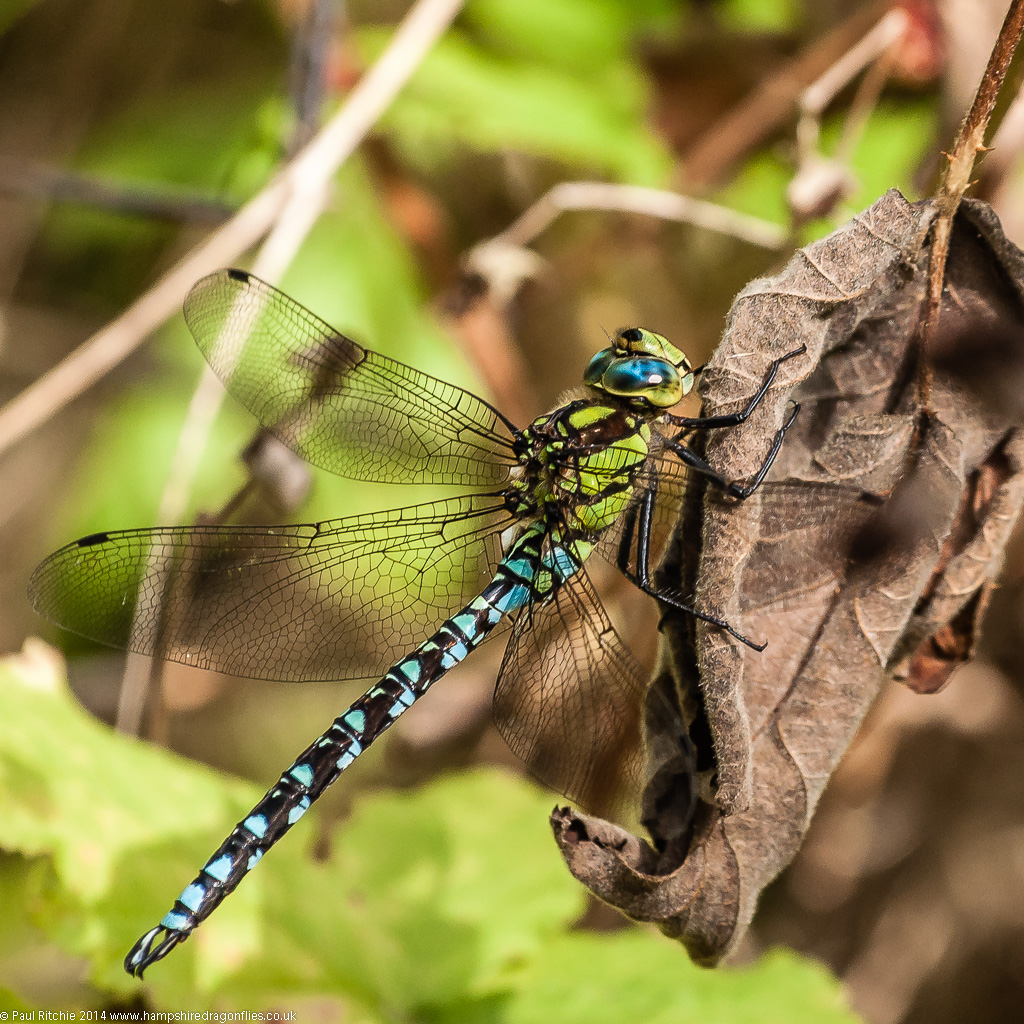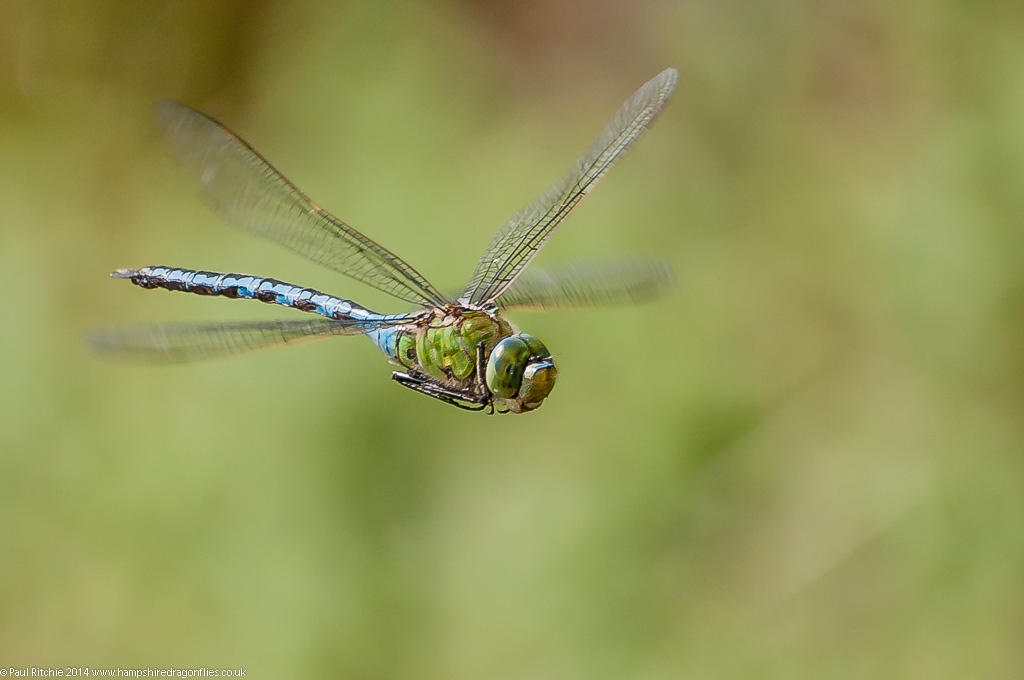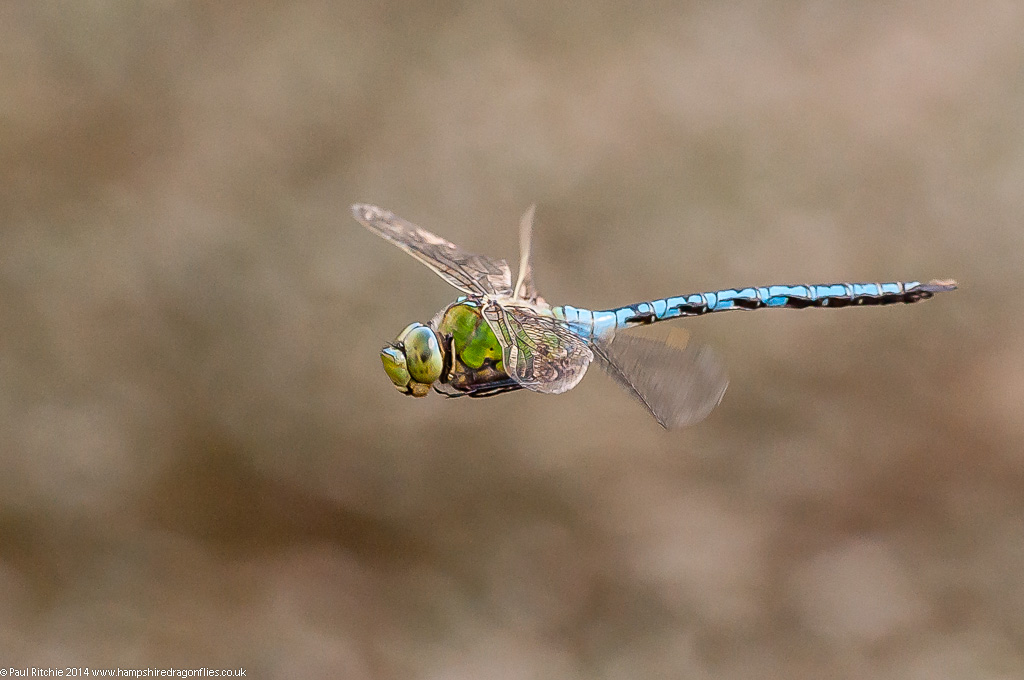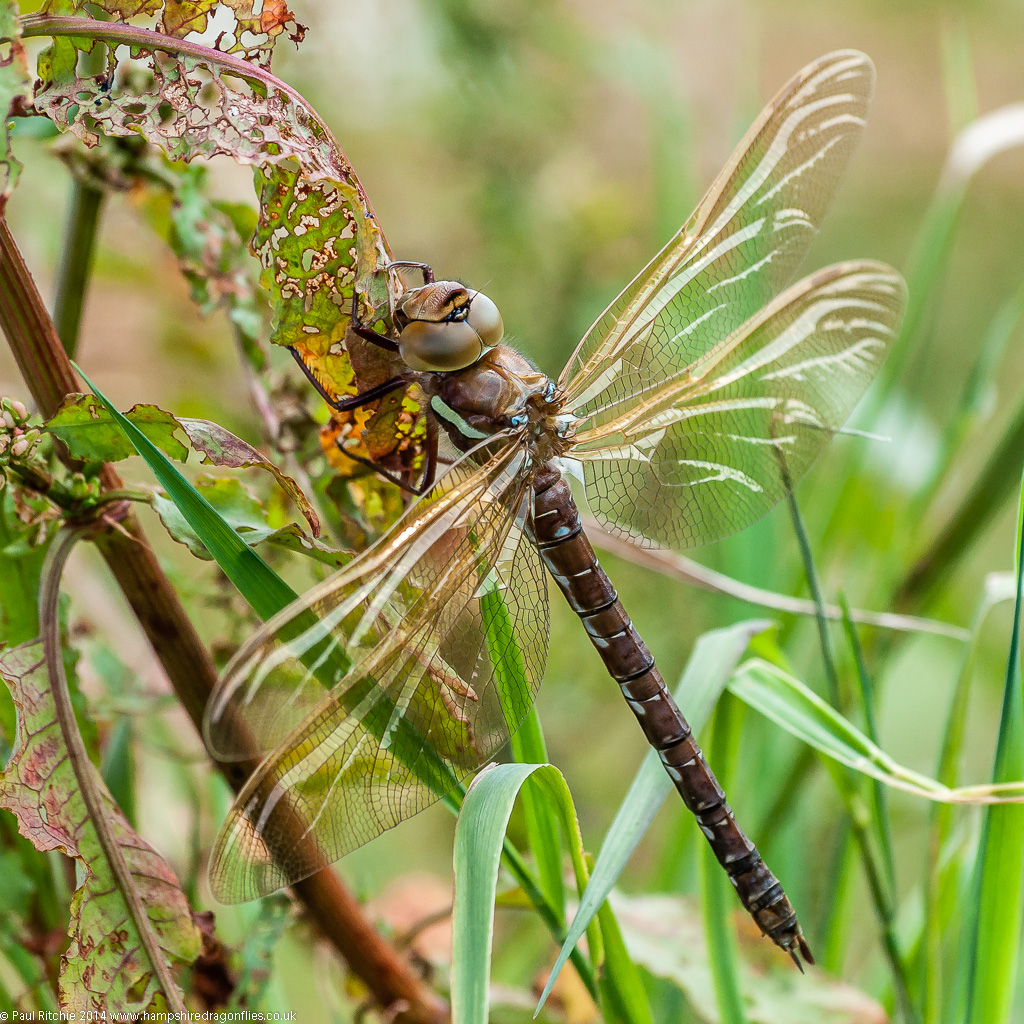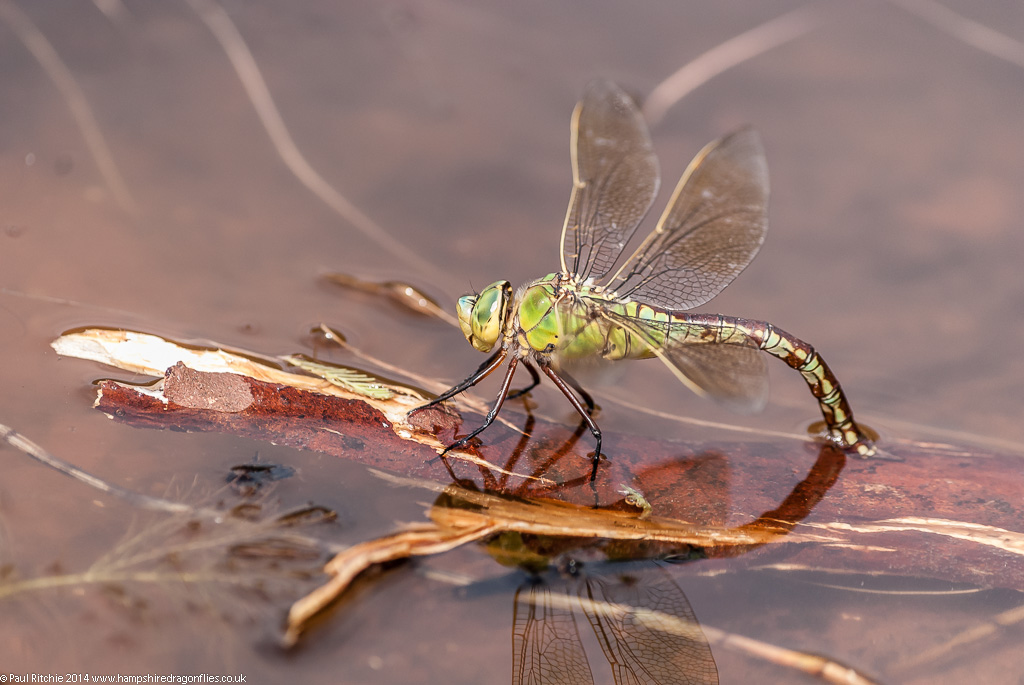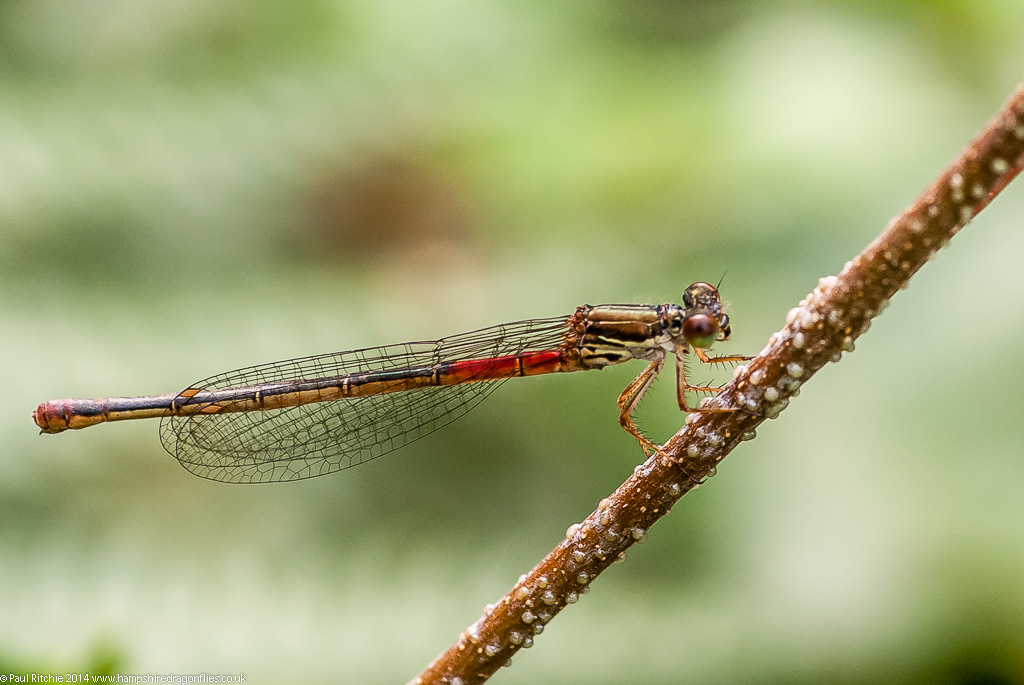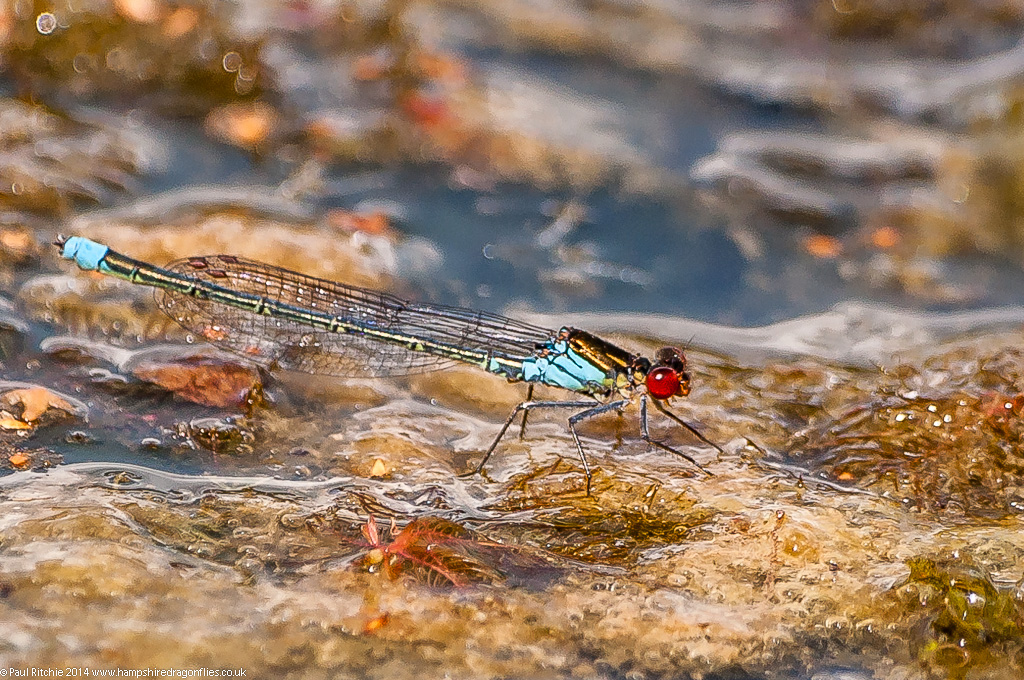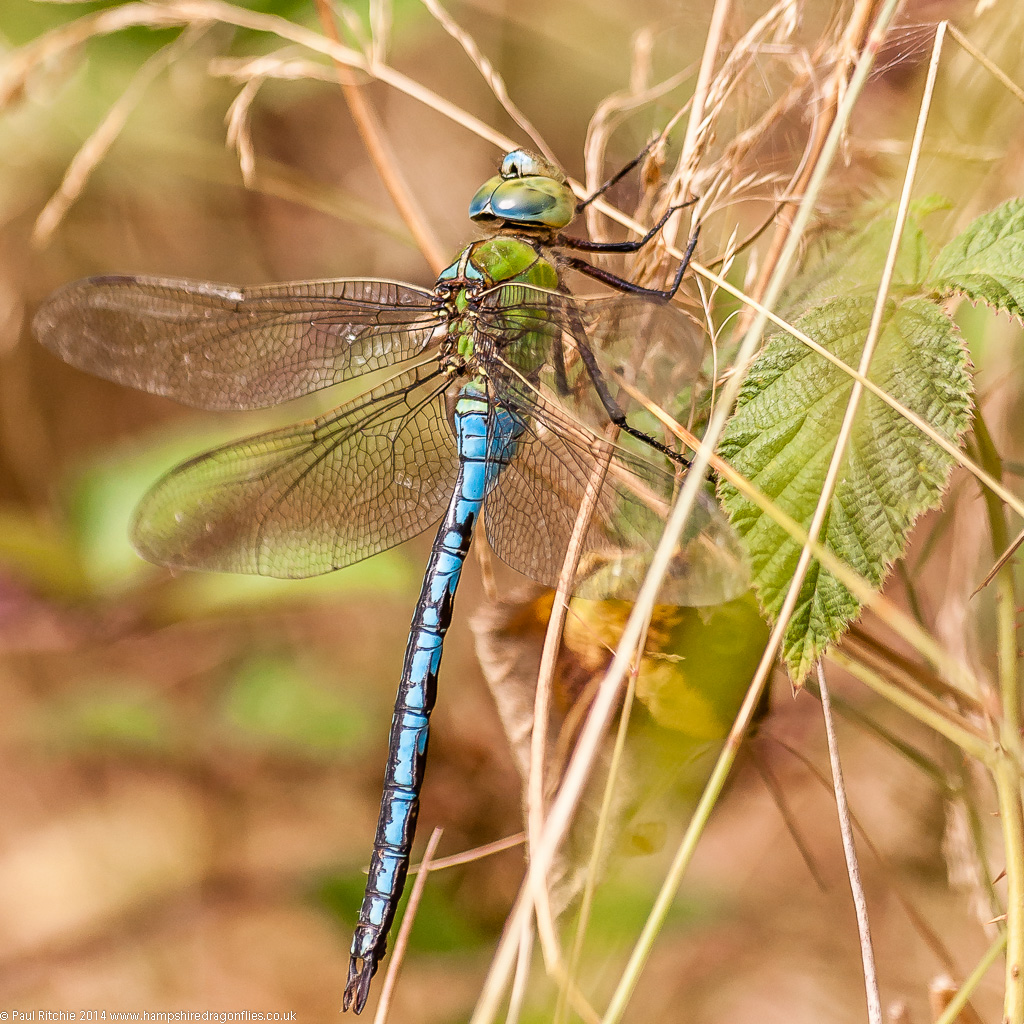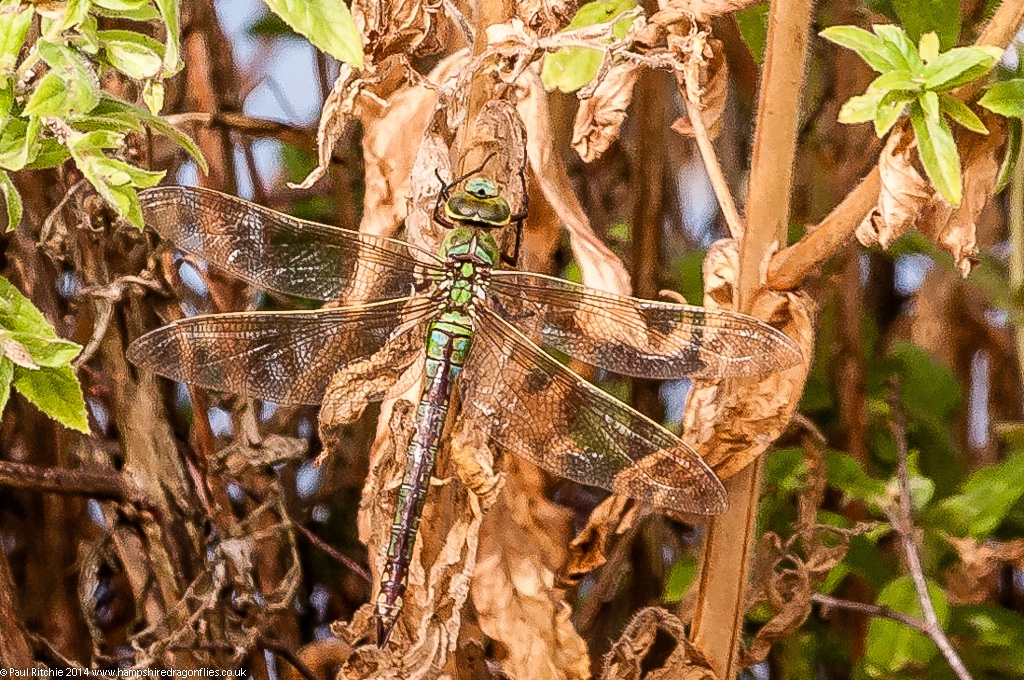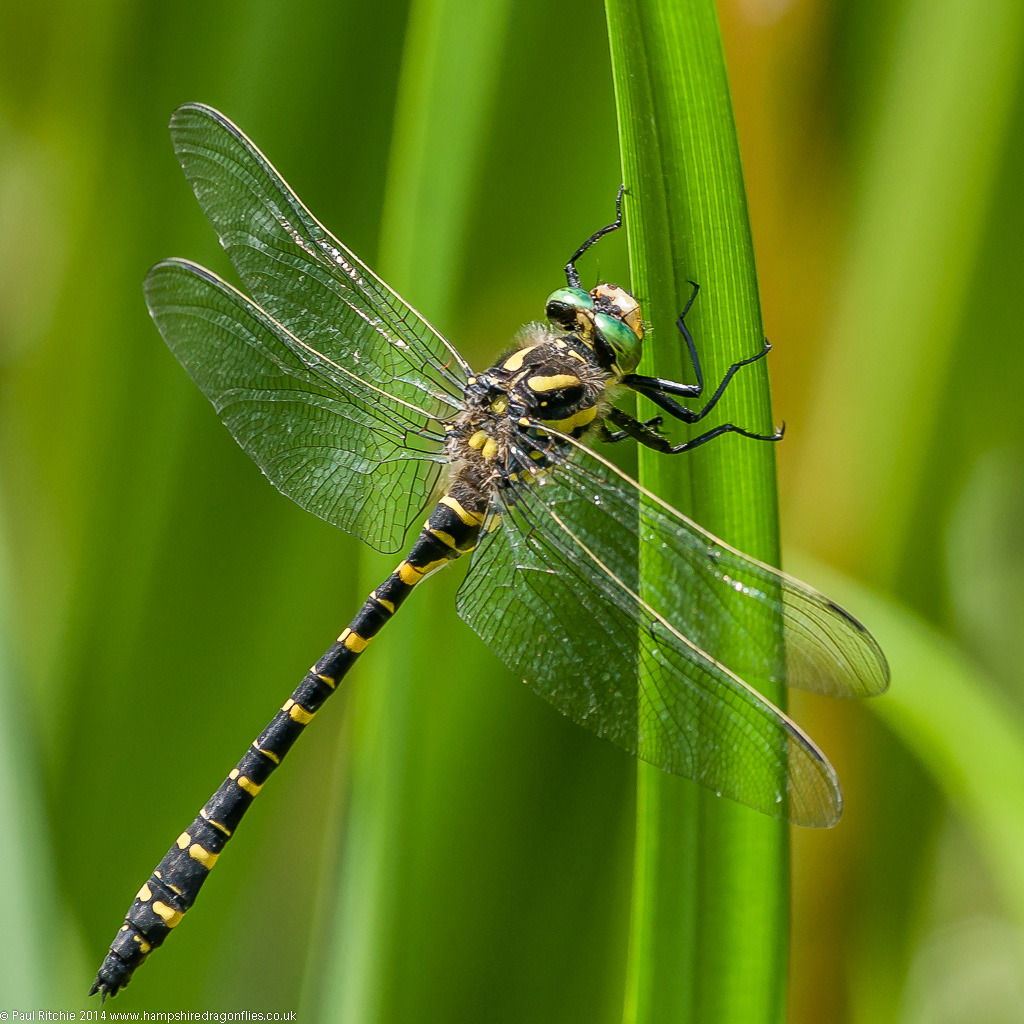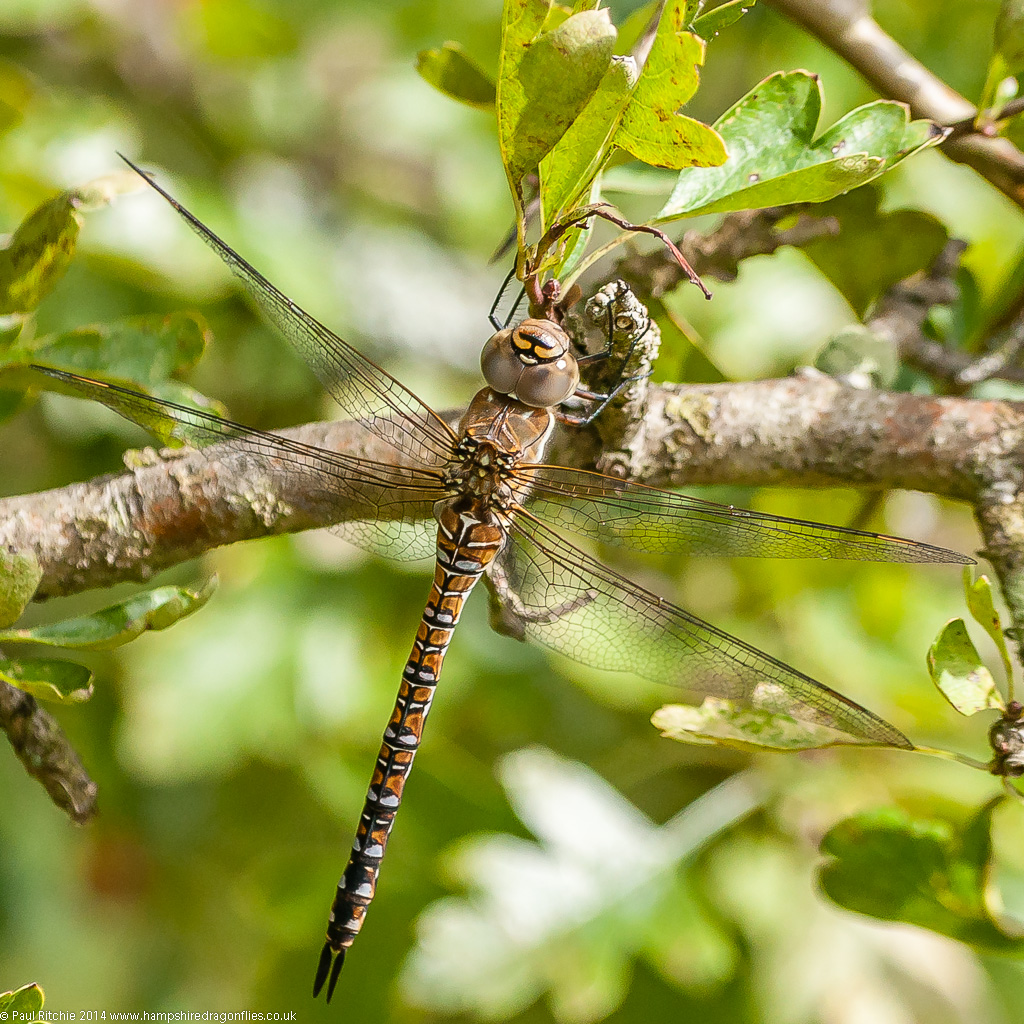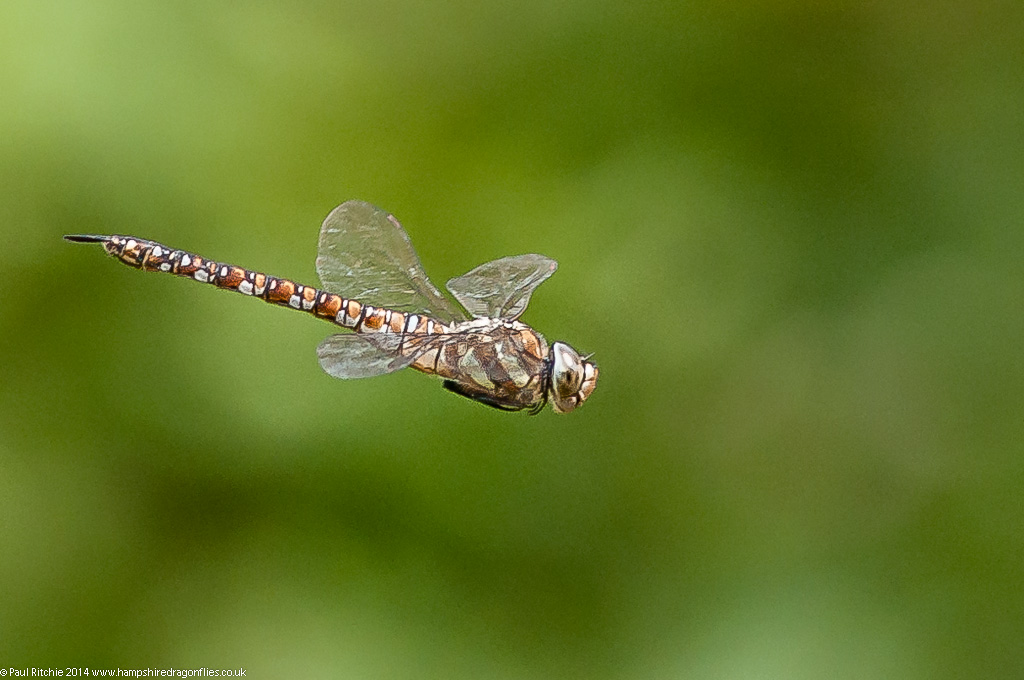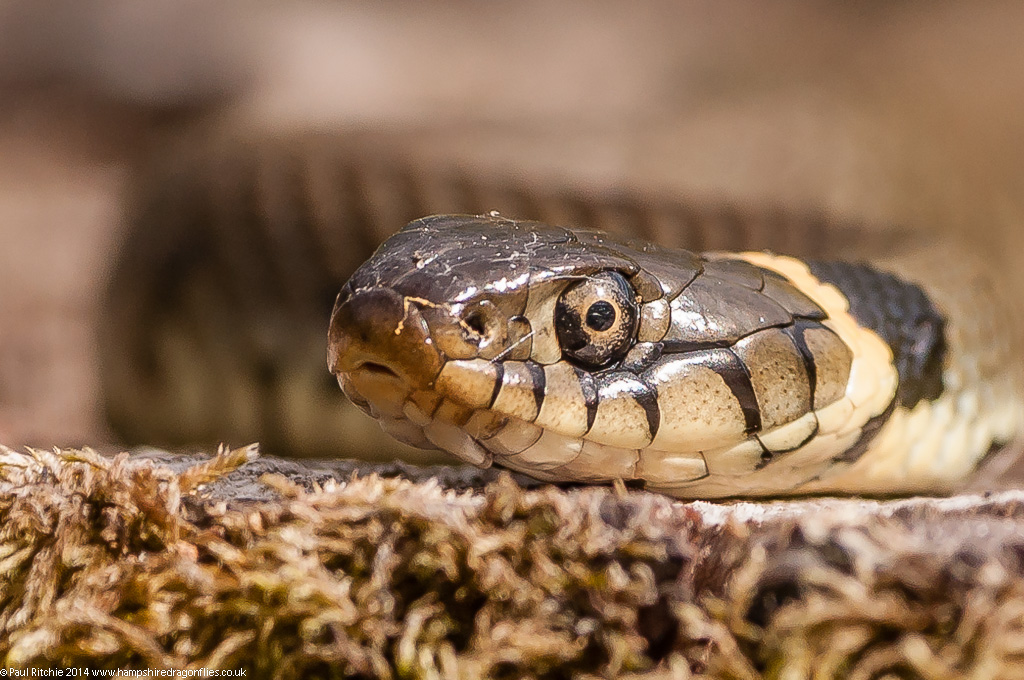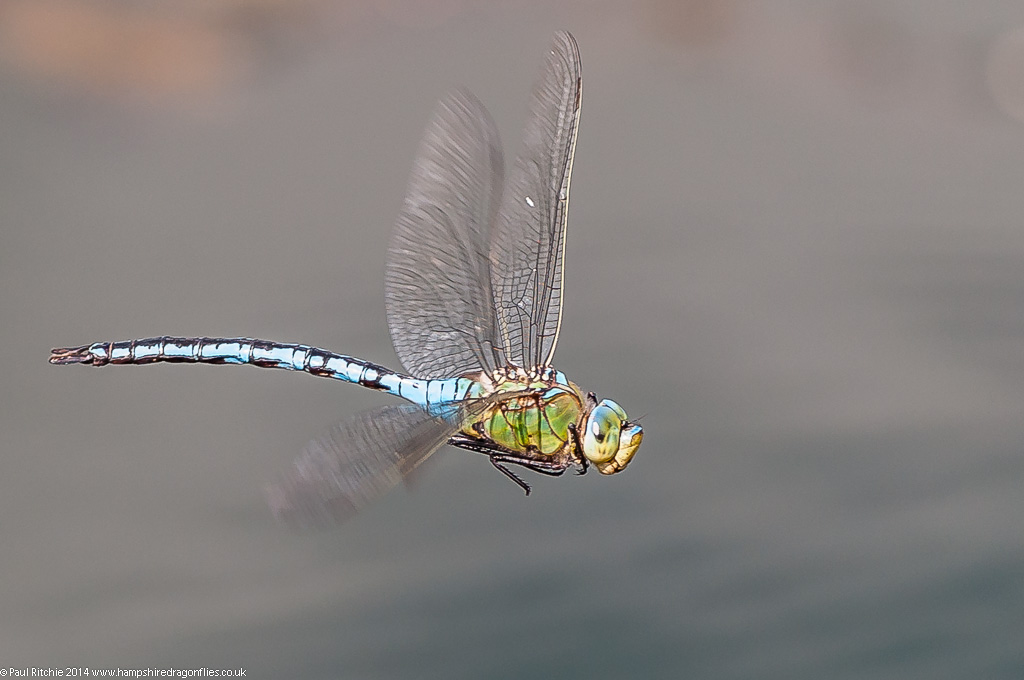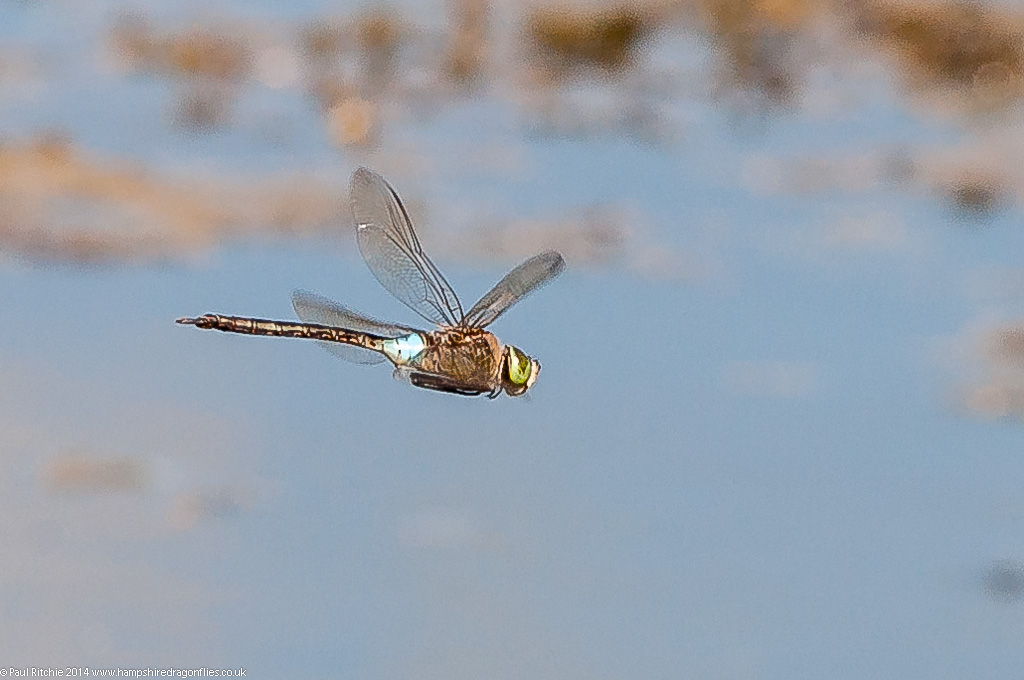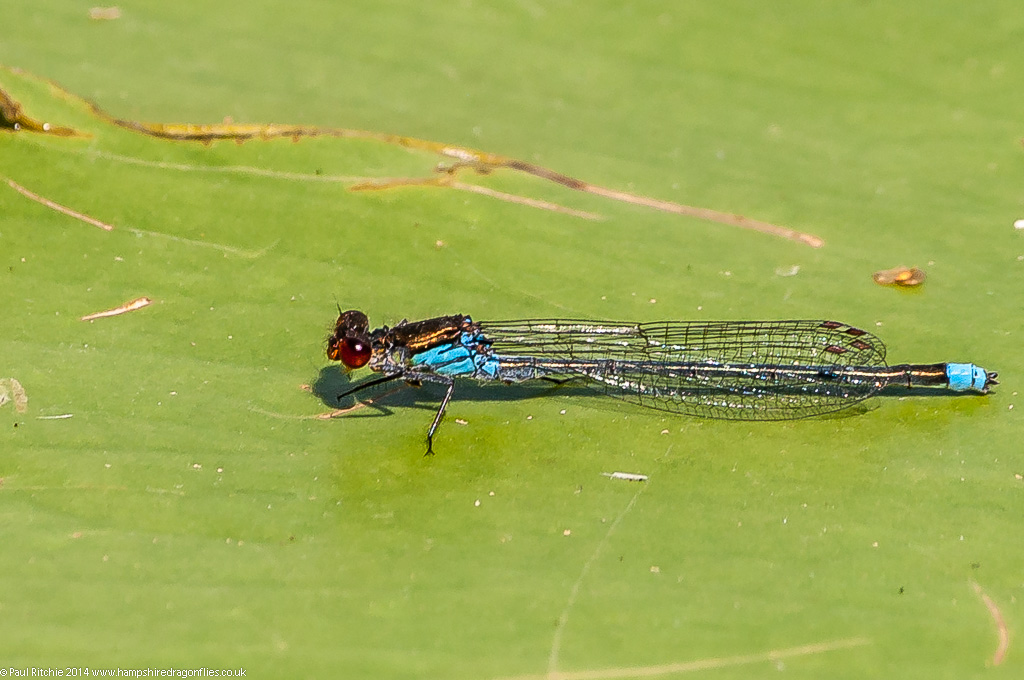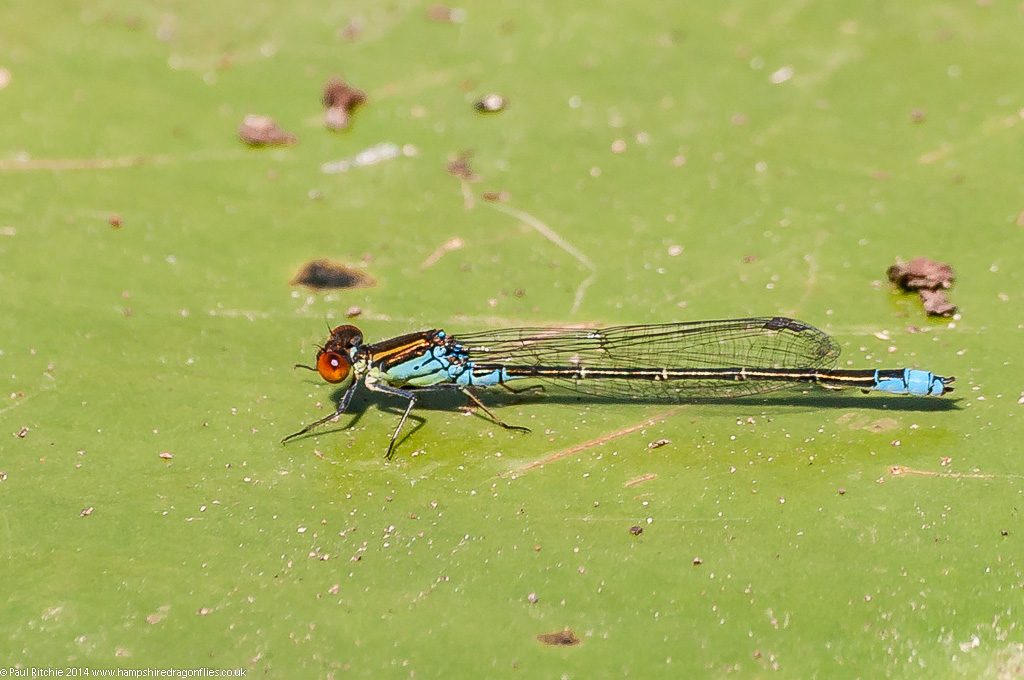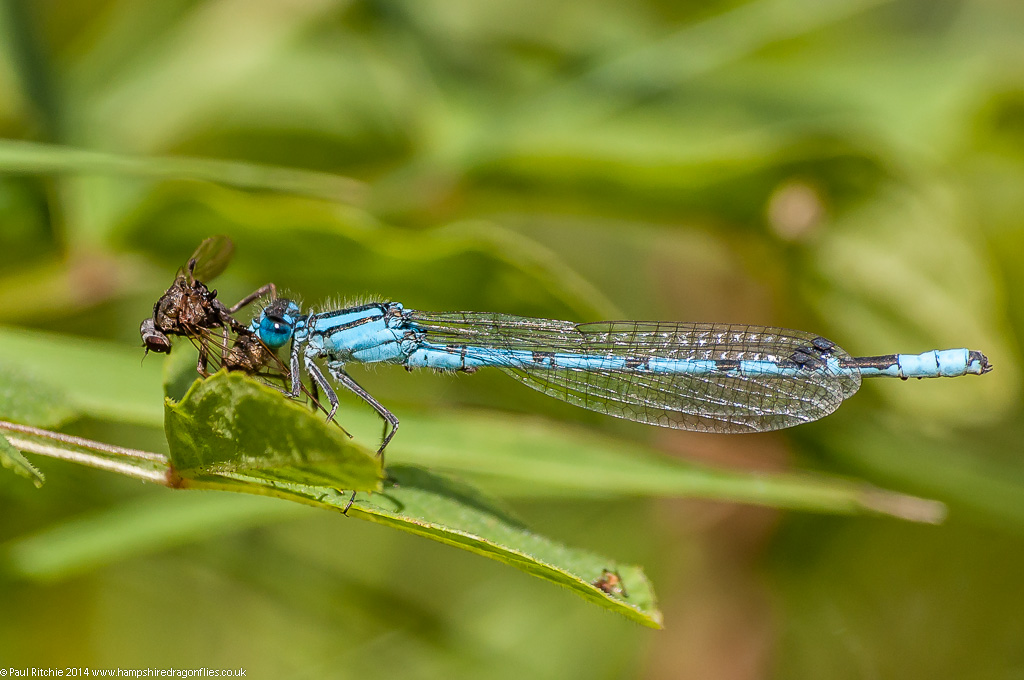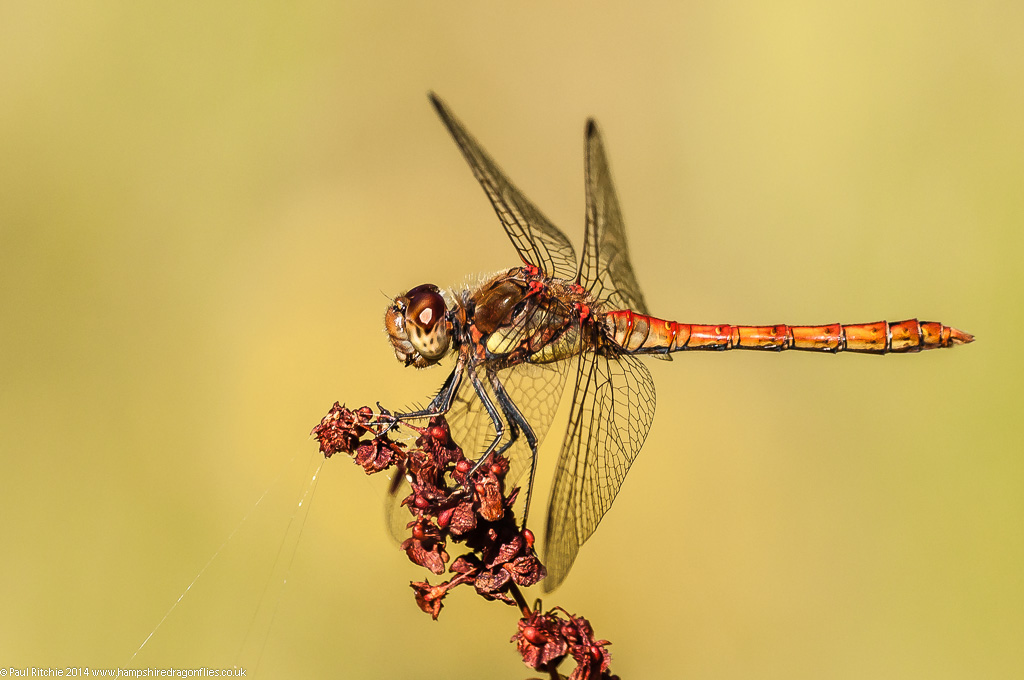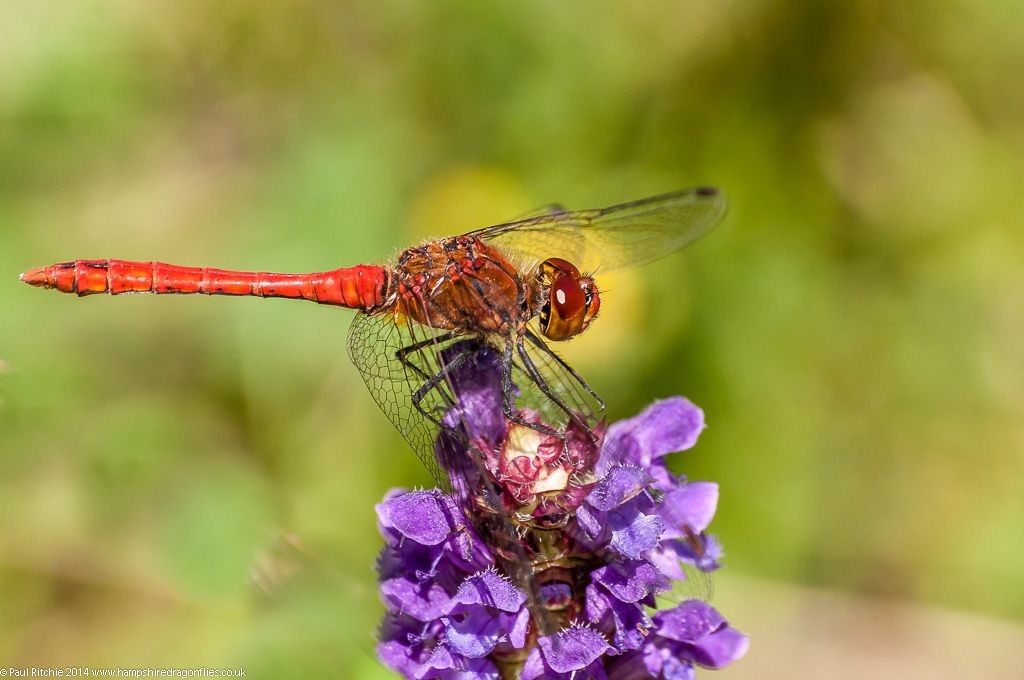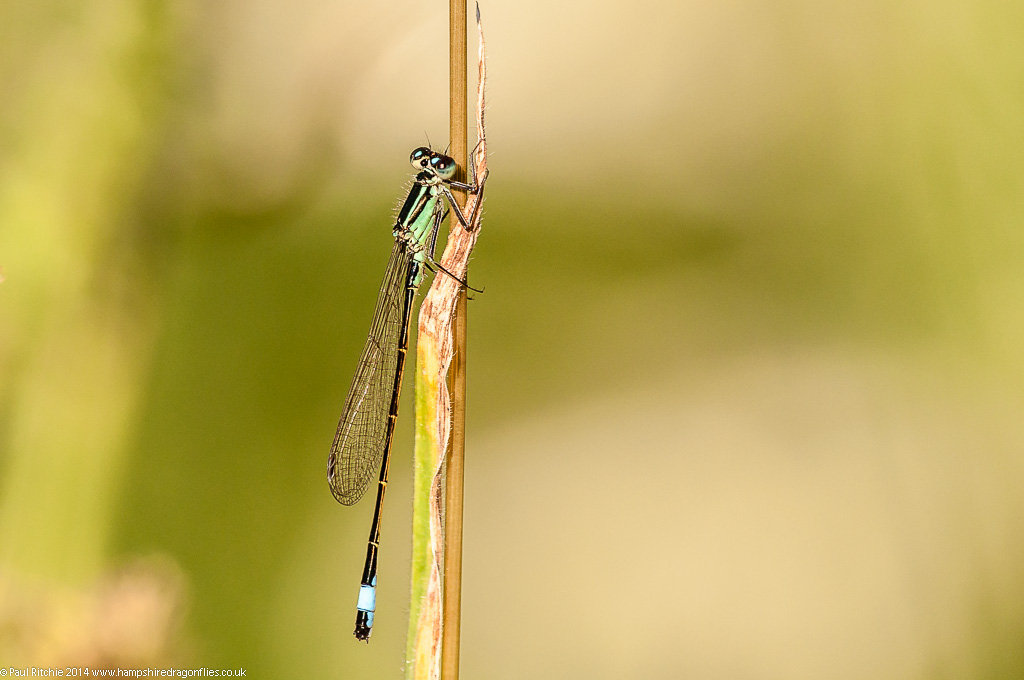Friday 22nd August
The discovery of a heathland water body which hasn’t dried out is reason enough to spend a day or two at Ramsdown. Of course the prospect of more Moorland Hawker sightings isn’t to be sniffed at.
A solo visit on Friday with a reasonably early start. A little too early perhaps to rustle up any hawkers in the clearing, but an ideal opportunity to explore the larger pond under heavy skies.
Sure enough, there were plenty of Emerald and Small Red, complimented by reasonable numbers of Black and Common Darters sheltering in the reeds under a presently gloomy sky.
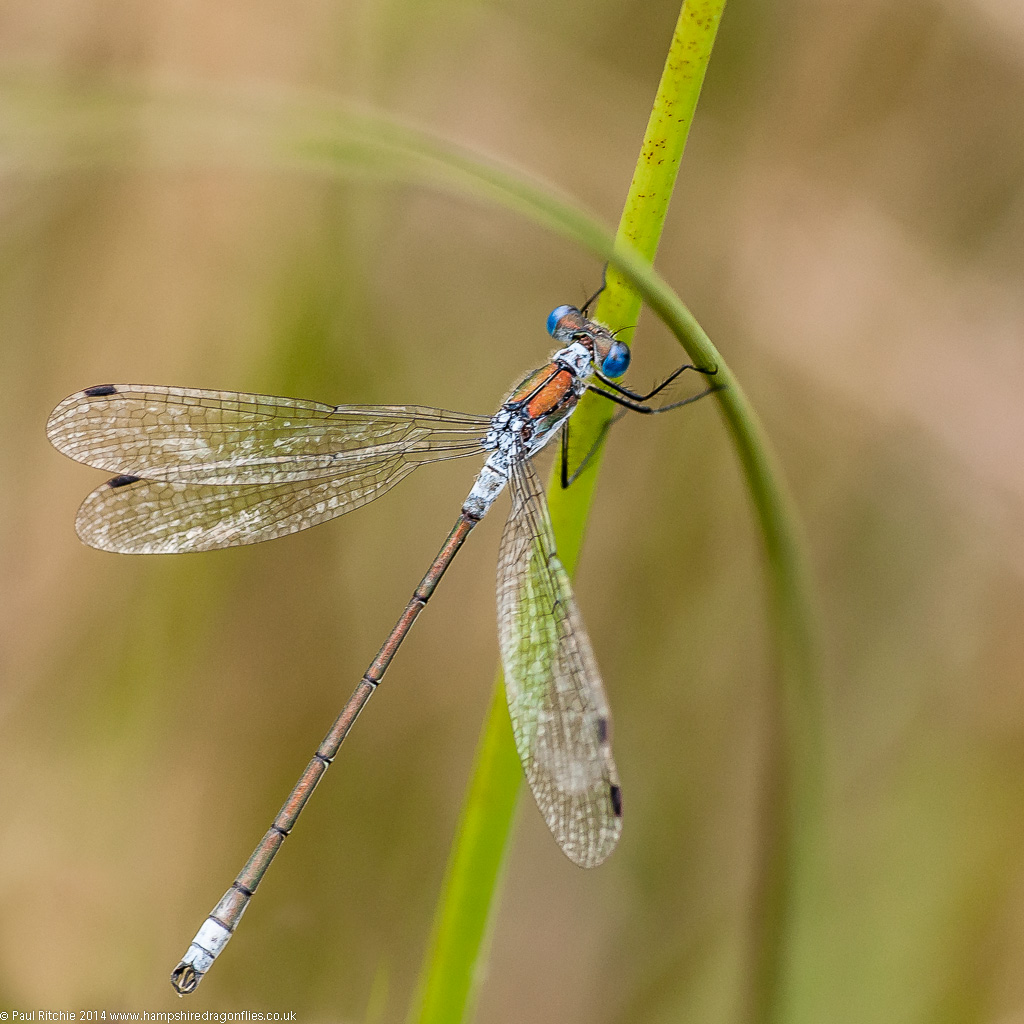
After doing a circuit I continued across the heath, finding the odd delight perched in the heather.
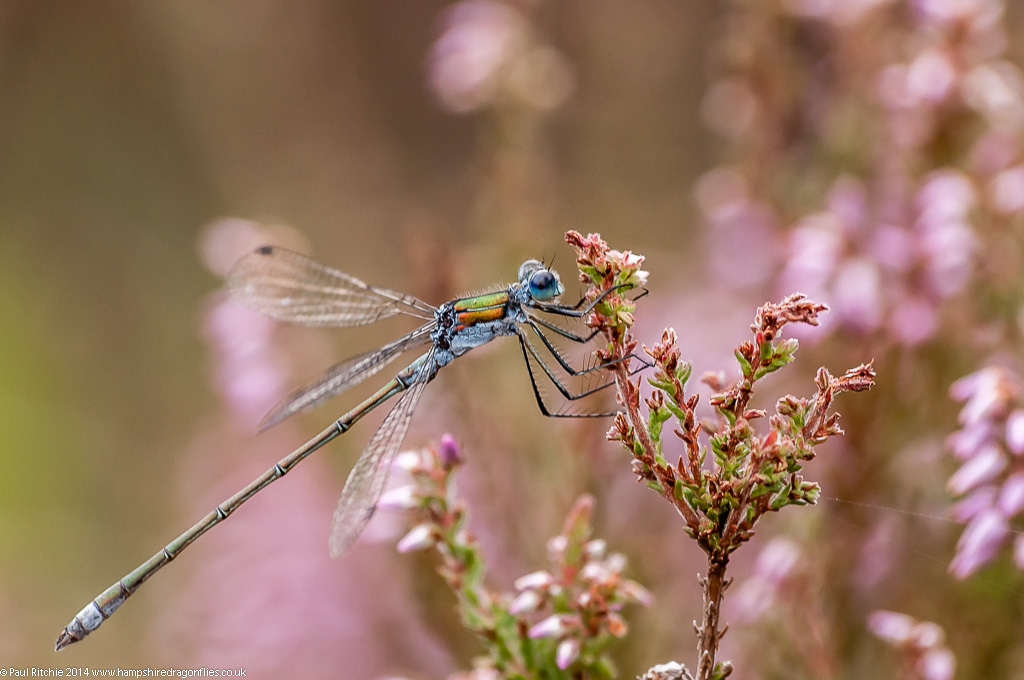
Nice to see some heather which was pink, the majority having been attacked by their host beetles which had reduced most to a bare brown skeleton.
At 11.30am I arrived at the lower pond just in time to find a female Moorland Hawker ovipositing, but she rose at my arrival and disappeared for the time being.
The broken cloud delayed the warming and it was another hour before things really began to kick off, with Black and Common Darters being the first on the scene.

Visits by the male Moorland were a little infrequent today, and when he did arrive he didn’t stay around long. Mind you, neither did the sun, which more than likely accounted for the subdued activity. At least a Black Darter kept me amused.
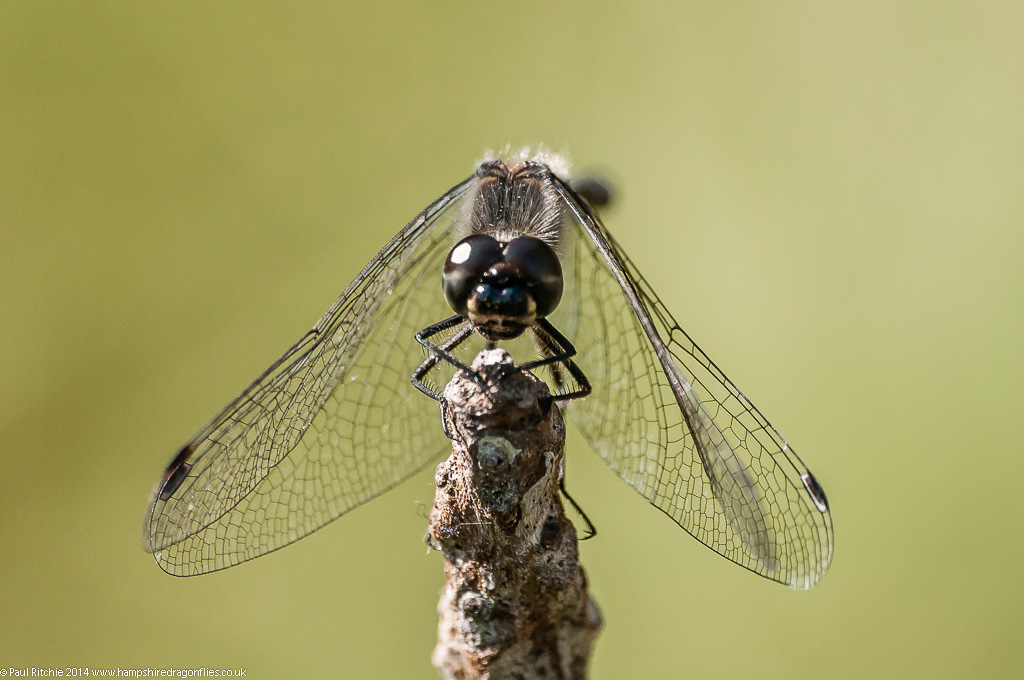
At 3.00pm a male Southern Hawker flew in and offered a couple of in-flight opportunities.
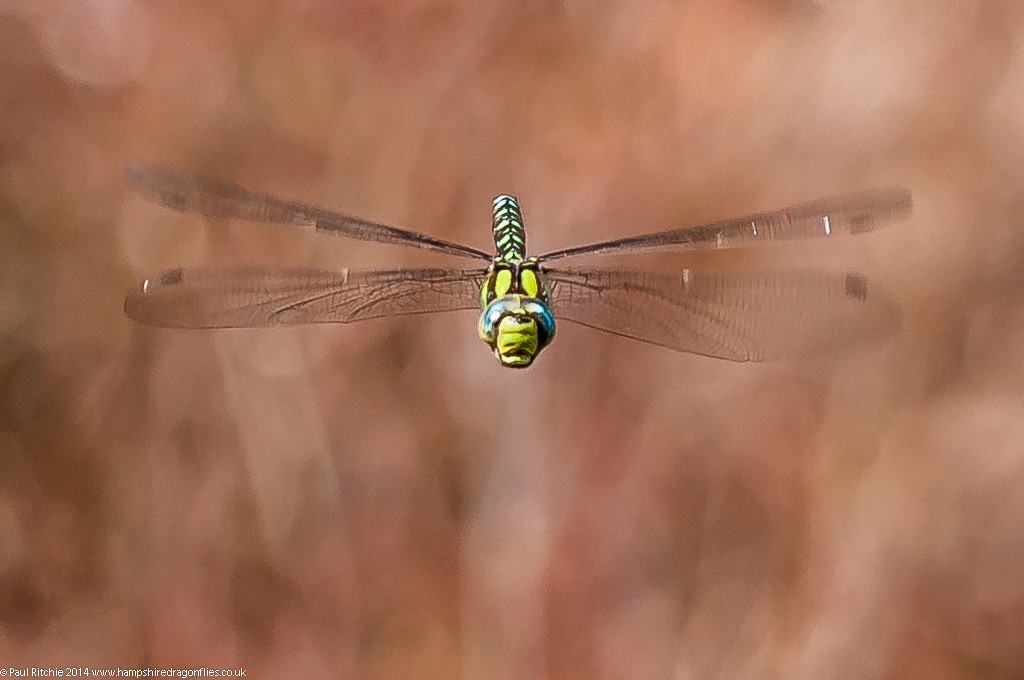
The sheltered aspect of this pond unfortunately means it is mostly in shadow by mid-afternoon, so I decided to have a look at the clearing on the way out, and was a little surprised and certainly delighted to encounter this male Golden-ringed.
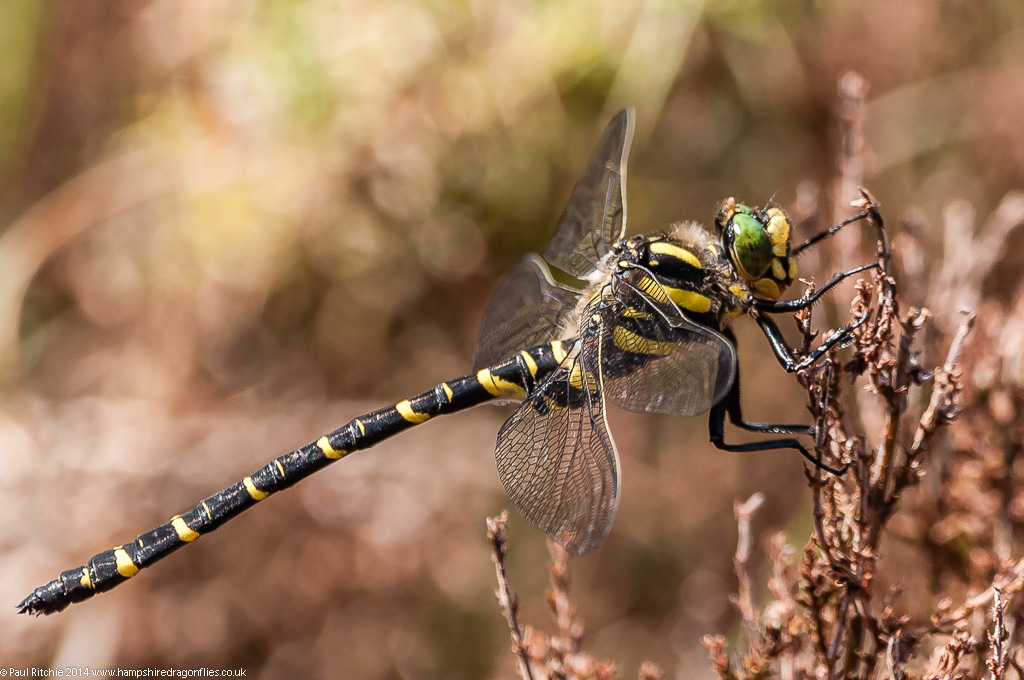
Saturday 23rd August
While the swarming hordes were polluting the rest of the New Forest, Doug and I decided to spend the day at Ramsdown in the hope of some good hawker activity in what turned out to be much better conditions.
Eager to avoid the traffic I went out a little earlier than our agreed meeting time to take a quick stroll along the old railway track at Christchurch Common, but apart from a few Black Darters and Emerald Damsels, the only hawker spotted was a Brown Hawker. Naturally he spotted me first and disappeared over the tree line
At least a female Emerald offered an early opportunity.

And so onto Ramsdown, checking the clearing first before moving onto the sanctuary of the lower pond.where we found a male Moorland already patrolling.

During a lull in the sunlight, we crossed to the other pond to witness another Moorland, a male Emperor and the usual strong populations of Black and Common Darter, Emerald, Common Blue and Small Red damsels.
As it was lunchtime – a ritual seemingly shared by humans and dragonflies alike – we returned to the clearing to witness a fine display of hawking, with several Migrant, a brief showing of a Brown and at least one Moorland feasting along the tree line.
One of the male Migrant landed beautifully in a tree close to us, and remained there in a state of suspended animation for a good half-hour.
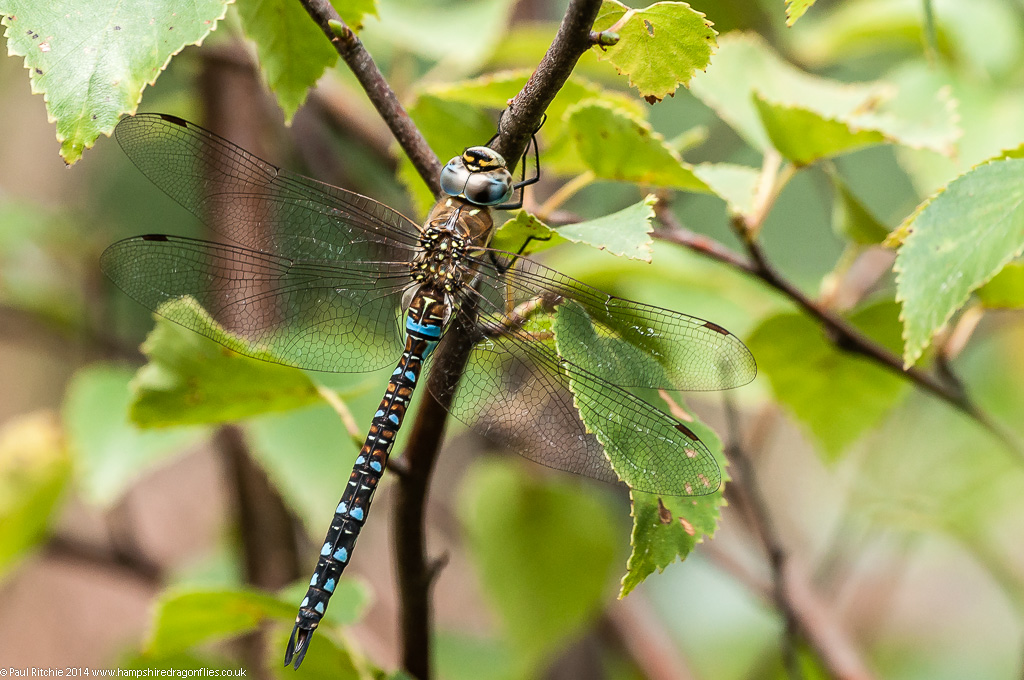
When lunchtime was over and all the hawkers had wandered elsewhere, we returned to the pond to find the male Moorland still in attendance.

The male Southern also made a visit, as did the female, and an Emperor flew through but didn’t stay around. Once again, by the time 3.00pm had arrived all activity seized with the shadowing of the pool, so we returned to the clearing to catch the hawkers feeding.
Interestingly the majority of the Migrant this time around appeared to be female, and there were plenty to keep us occupied. During the fine overhead display one-by-one they would drop down low into the heather or find a convenient low tree branch.
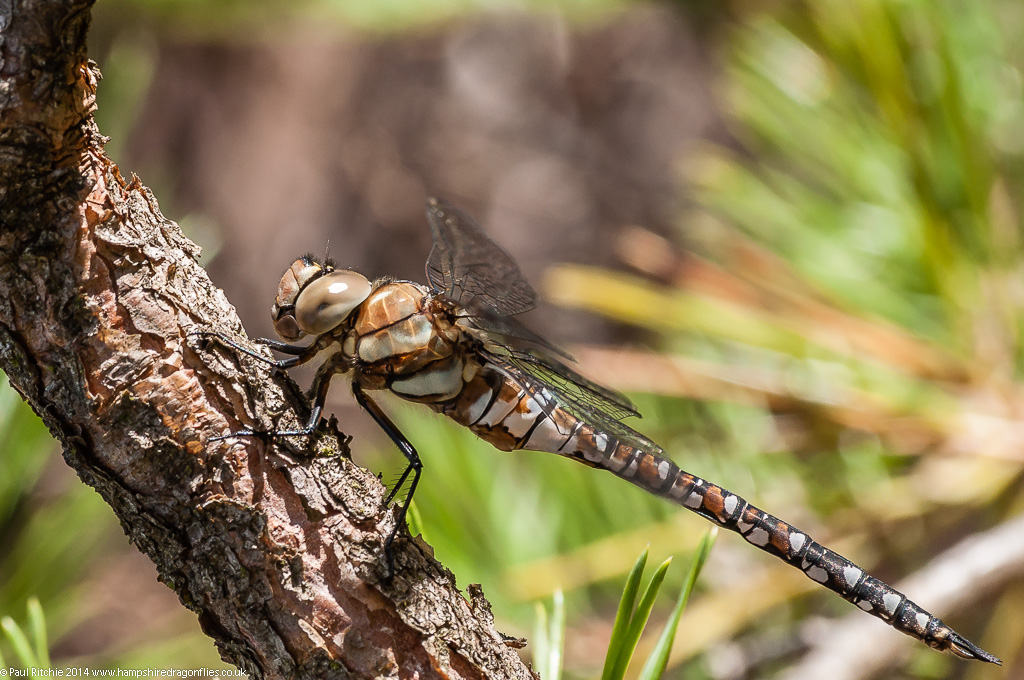
By 4.00pm even the clearing became quiet, so just enough time to grab a female Common Darter on the way out.
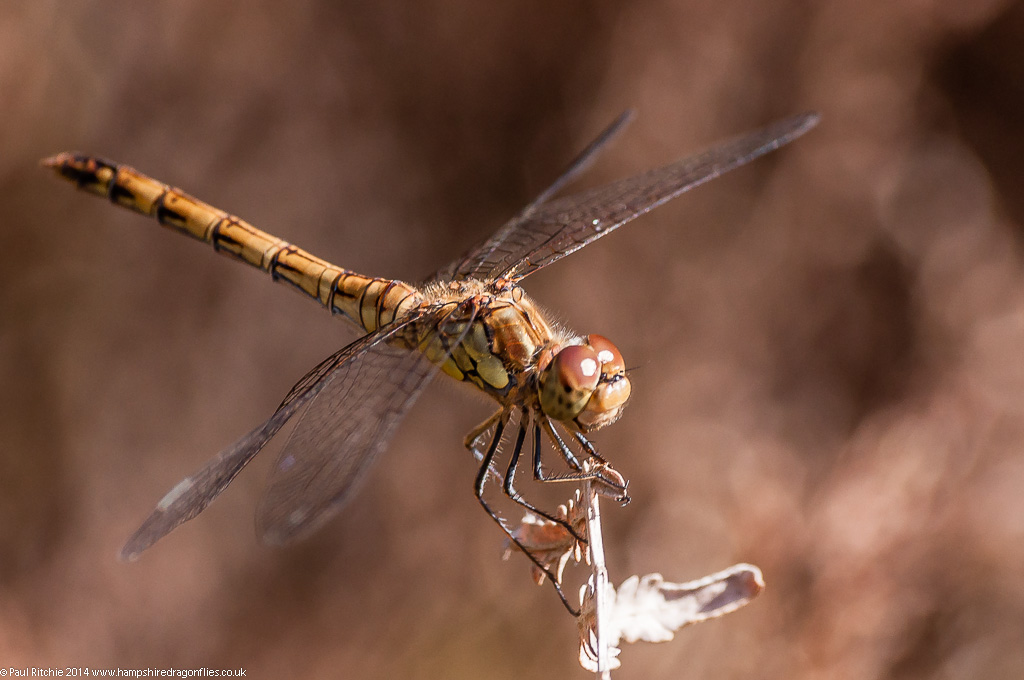
Two productive days, and a pleasure to once again spend some hours at an agreeable pond

